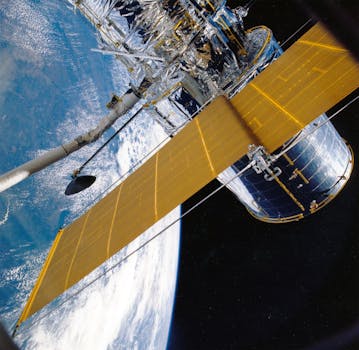
Orbiting Innovations: Key Updates in Satellite Telecommunications Technology
Satellite Telecommunications Technology has revolutionized the way we communicate and access information. With the increasing demand for global connectivity, satellite technology has become a vital component of modern telecommunications. In this article, we will explore the key updates in satellite telecommunications technology and their impact on the industry.
Satellite telecommunications technology has come a long way since its inception. The first commercial communications satellite, Intelsat 1, was launched in 1965, and since then, the technology has evolved significantly. Today, satellites play a crucial role in providing internet access, voice and data services, and broadcast services to remote and underserved areas.
The latest advancements in satellite telecommunications technology include the development of high-throughput satellites (HTS), which offer faster data speeds and greater capacity. HTS systems use multiple spot beams to provide targeted coverage, resulting in higher throughput and better spectral efficiency. This technology has enabled the provision of broadband services to areas where traditional fiber-optic connectivity is not available.
Another significant development in satellite telecommunications technology is the emergence of low-Earth orbit (LEO) satellites. LEO satellites orbit the Earth at an altitude of approximately 2,000 kilometers, which is much lower than traditional geostationary satellites. This lower altitude reduces latency and enables faster data transfer rates, making LEO satellites ideal for real-time applications such as video conferencing and online gaming.
Advancements in Satellite Technology

Recent years have seen significant advancements in satellite technology, including the development of advanced propulsion systems, more efficient power generation, and improved thermal management. These advancements have enabled the creation of smaller, more efficient, and cost-effective satellites. The use of 3D printing and other manufacturing techniques has also reduced production costs and enabled the rapid development of satellite components.
The increasing use of artificial intelligence (AI) and machine learning (ML) in satellite telecommunications is also transforming the industry. AI and ML algorithms can be used to optimize satellite operations, predict maintenance needs, and improve network performance. This can result in significant cost savings and improved service quality.
The integration of satellite technology with other technologies, such as 5G and the Internet of Things (IoT), is also driving innovation in the industry. The use of satellite-based IoT services can provide connectivity to remote devices and enable a wide range of applications, including smart agriculture, smart cities, and industrial automation.
Challenges and Opportunities

Despite the many advances in satellite telecommunications technology, there are still significant challenges to be addressed. One of the major challenges is the issue of space debris, which can pose a significant risk to satellite operations. The increasing number of satellites in orbit has also raised concerns about congestion and interference.
However, these challenges also present opportunities for innovation and growth. The development of new technologies and strategies to address these challenges can create new business opportunities and drive investment in the industry. The use of satellite technology to provide connectivity to underserved areas can also have a significant impact on economic development and social inclusion.
In conclusion, the latest updates in satellite telecommunications technology are transforming the industry and enabling the provision of global connectivity. The development of HTS, LEO satellites, and other technologies is driving innovation and growth, and the integration of satellite technology with other technologies is creating new opportunities for applications and services.
As the demand for satellite-based services continues to grow, it is likely that we will see further advancements in satellite telecommunications technology. The use of AI, ML, and other technologies will continue to play a significant role in optimizing satellite operations and improving network performance.
Future of Satellite Telecommunications

The future of satellite telecommunications is exciting and dynamic. With the increasing demand for global connectivity, satellite technology is likely to play an even more critical role in providing internet access, voice and data services, and broadcast services to remote and underserved areas.
The development of new satellite constellations, such as those being launched by companies like SpaceX and Amazon, will provide even more capacity and coverage. The use of advanced technologies, such as quantum computing and nanotechnology, will also enable the creation of more efficient and powerful satellites.
In addition, the integration of satellite technology with other technologies, such as 5G and IoT, will create new opportunities for applications and services. The use of satellite-based services to provide connectivity to remote devices and enable smart applications will have a significant impact on industries such as agriculture, transportation, and healthcare.
See more:


